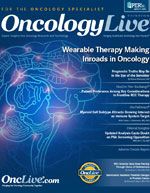NYU Scientist Sees Hope Peeking Through Gloom of Glioblastoma
Using a "one-drug-fits-all" approach is not going to be a successful paradigm in a complex disease like glioblastoma.
Andrew S. Chi, MD, PhD

Andrew S. Chi, MD, PhD
Assistant Professor, NYU Langone Medical Center
Chief of Neuro-Oncology, Laura and Isaac Perlmutter Cancer Center
Developing much-needed, effective treatments for these tumors begins with the understanding that there are different molecular subtypes of glioblastoma tumors, each one very different from the other. This heterogeneity occurs from patient to patient, but we also see it within the tumors of individual patients. Adding to the difficulty in treating individuals with this disease is the fact that these subtypes can change when patients return to us after treatment. These recurrent tumors can be very different from the original tumor.
There is reason for optimism, though. We’ve learned a great deal about the basic biology of glioblastoma in the last 10 years. A significant amount of my prior research has been devoted to understanding these different genetic glioblastoma subtypes, with the aim of developing more specific treatment strategies.
For example, there is a subset of tumors with a mutation in either of 2 genes, IDH1 and IDH2, that encode the enzyme isocitrate dehydrogenase. Mutations in IDH1 occur in one-third of gliomas, as well as in some blood, skin, soft tissue, and cartilage cancers, and these tumors are impervious to current anticancer chemotherapies.
The IDH1 gene plays a crucial role in cellular metabolism, and we found that IDH1-mutant cells have abnormally low levels of a critical metabolite, nicotinamide adenine dinucleotide (NAD). We theorized that lowering NAD levels furt
her would kill these tumor cells. As it turned out, administering a class of drugs called NAMPT (nicotinamide phosphoribosyltransferase) inhibitors, which are known to lower NAD levels, to mice with IDH1-mutant tumors or to cultured human IDH1-mutant cells, killed the cancer cells. Should further animal and human tissue testing prove successful, we hope to launch clinical trials in select cancer patients with IDH1 mutations within 3 years. Instead of using classic chemotherapy, we would identify abnormal metabolism and target that abnormal metabolism with specific metabolic drugs.
We are also beginning to learn a lot about how these glioblastomas interact with the patient’s own immune system, but we are still at the tip of the iceberg in our understanding. As we more completely understand that interaction, we will start making strides in developing effective immunotherapies against these tumors.
To that end, we are designing novel immunotherapy trials with a unique design and the most cutting- edge laboratory correlative research. Since I joined NYU Langone in August 2015, I have been working with John G. Golfinos, MD, my co-director of the Brain Tumor Center; Benjamin G. Neel, MD, PhD, director of The Laura and Isaac Perlmutter Cancer Center; and Jeffrey S. Weber, MD, PhD, deputy director of the Perlmutter Cancer Center and co-director of the Melanoma Research Program, to build up the Brain Tumor Center’s research program to complement the clinical and research strengths that have already been established. For example, our neuroradiologists have a national reputation for outstanding research including developing novel MRI techniques to accurately distinguish between tumor and normal brain and between growing and stable tumors.
We have a long history of being recognized as one of the foremost neurosurgery centers for brain tumors. Our radiosurgery volume of patients with brain metastasis is among the highest in the country. Our pediatric brain tumor group, including our Comprehensive Neurofibromatosis Center, has been a national leader in the field for clinical trials. And, we are further bridging basic and translational research with our clinic activities. I think the tide will certainly turn, and the outlook for glioblastoma patients will improve.
We need to figure out how to use drugs that have proved to be effective in other cancers for glioblastoma. We need to start rationally applying our understanding of the fundamental biology of glioblastoma in order to see some success with our clinical trials with new investigational agents. Clearly, using a “one-drug-fits-all” approach is not going to be a successful paradigm in a complex disease like glioblastoma. That’s been proved over and over again. Instead, we need to select the patients who are most likely to respond to each specific drug, based on tumor subtype and heterogeneity.
Glioblastoma is a cancer for which the prognosis, unfortunately, remains poor. Despite the development of recent treatments that modestly prolong survival, the benefits that patients gain from these therapies are still measured in months. Almost every patient eventually dies from his glioblastoma, and most people die less than 2 years from the date of diagnosis.




